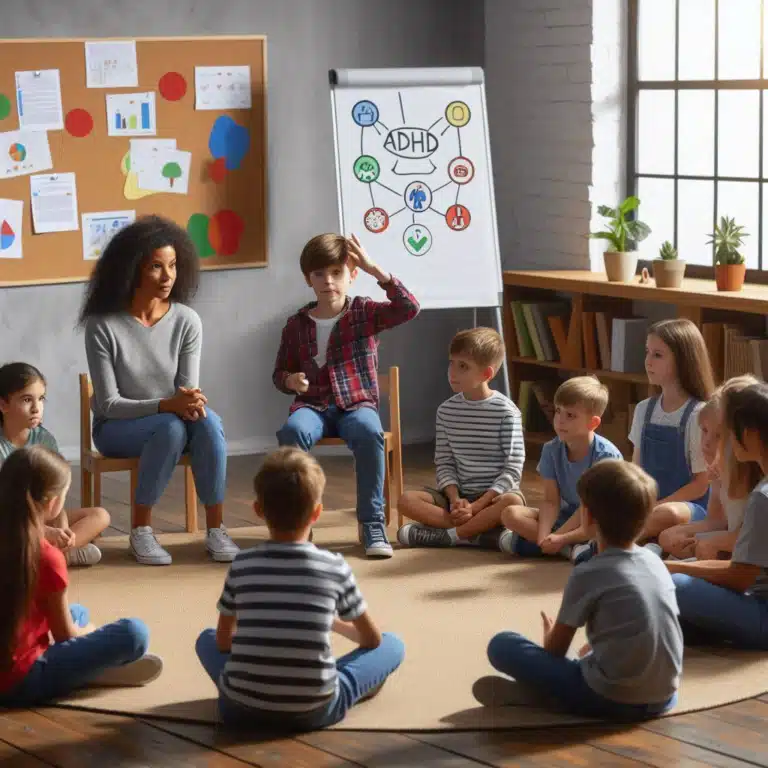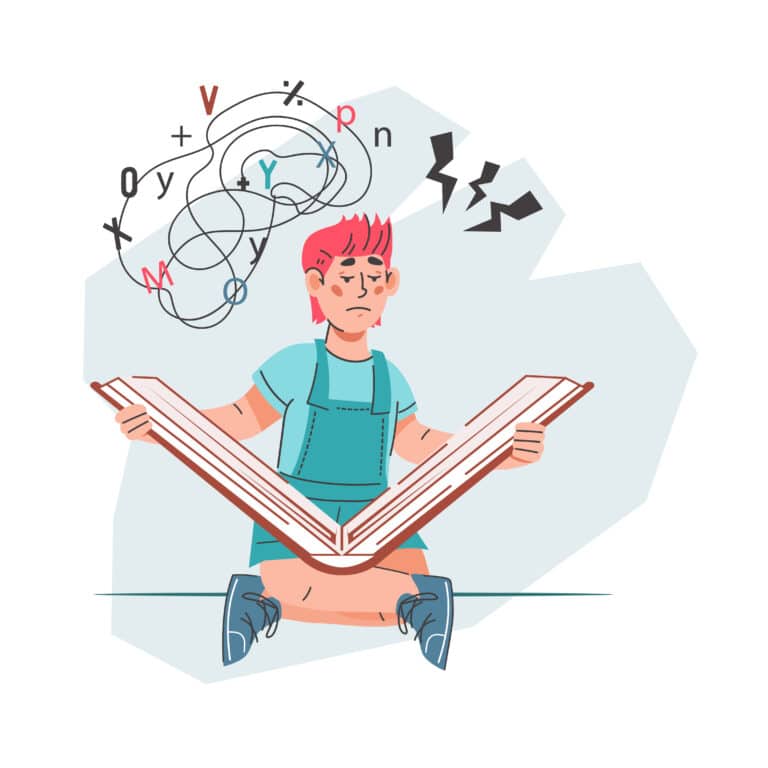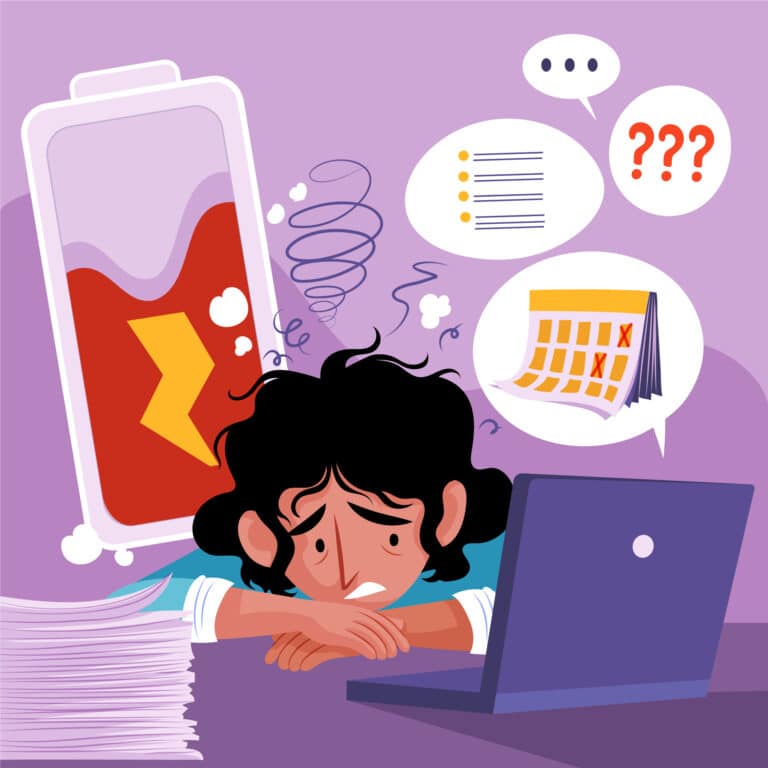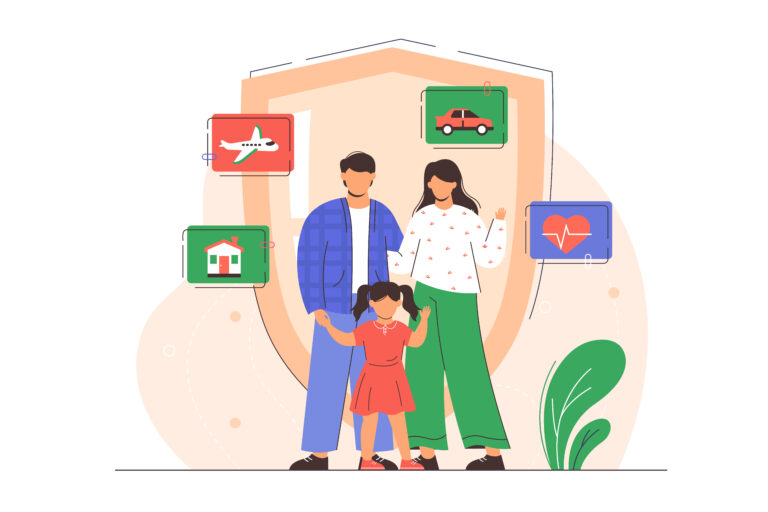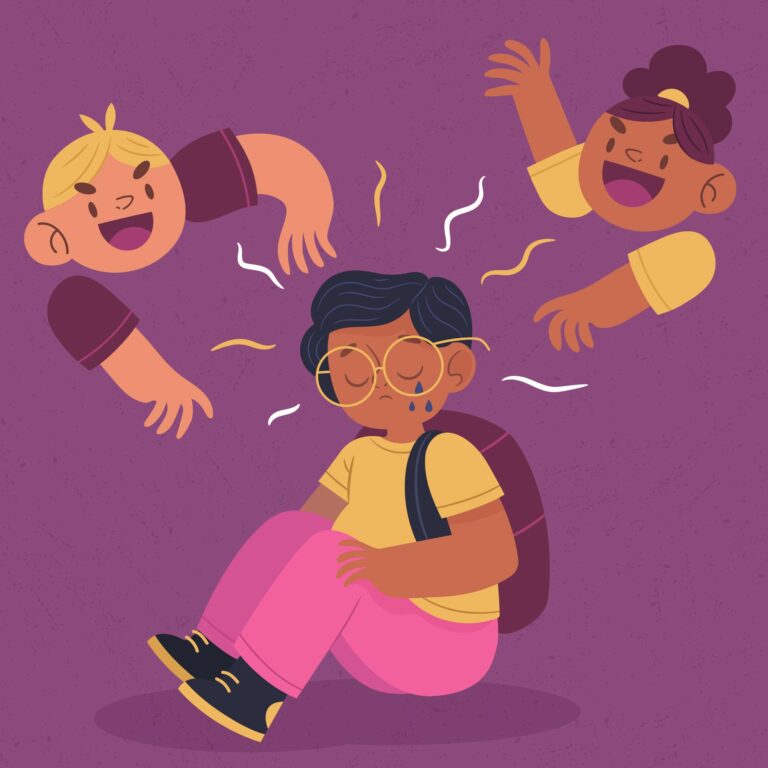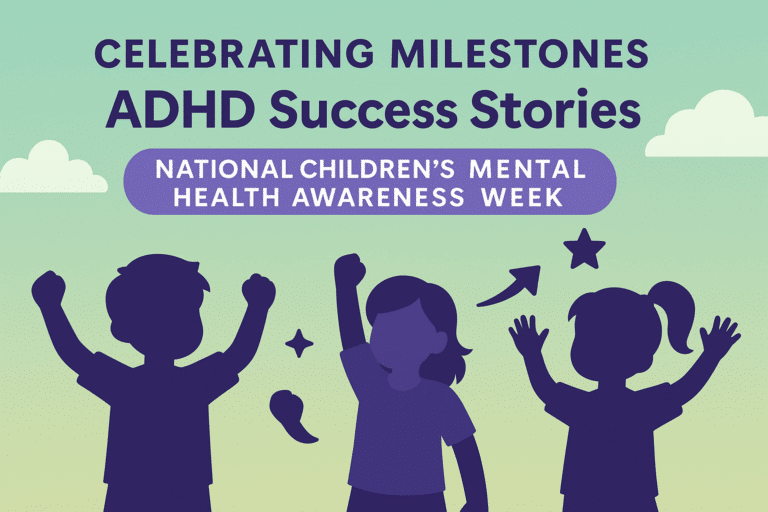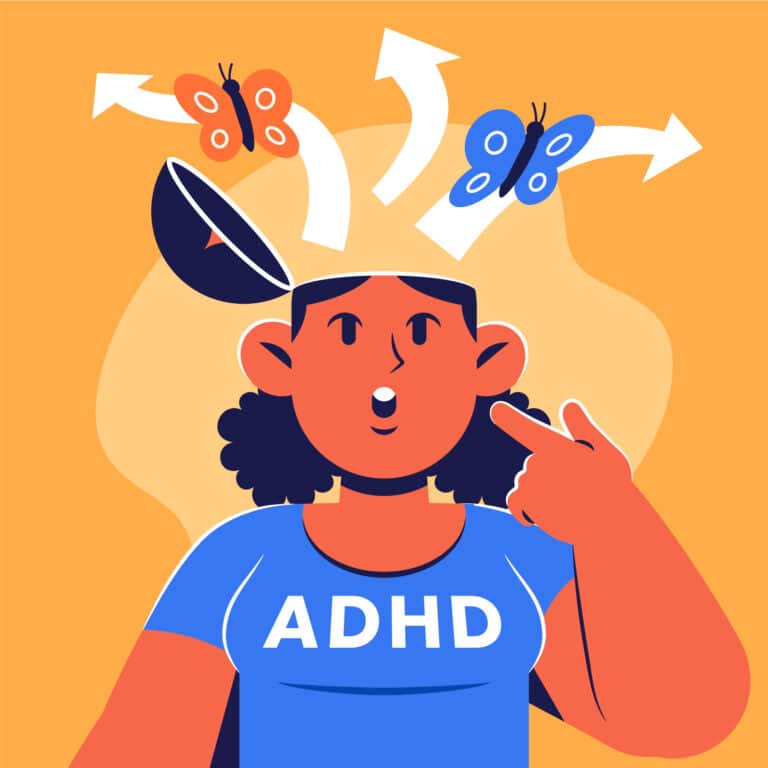Does your child’s endless energy and impulsivity leave you wondering whether it’s simply part of growing up or something more, like Attention Deficit Hyperactivity Disorder (ADHD)? This guide will help you identify the behaviors to observe, explore age-specific symptoms, and understand the steps to take if you suspect ADHD. By breaking down the signs of this condition, you’ll gain clarity on recognizing early indicators of ADHD. We’ll also cover when it might be time to seek professional insight, easing any concerns about your child’s development. With these insights, you’ll feel empowered to take positive steps, ensuring your child receives the right support for their unique needs.
Introduction

As a parent, understanding ADHD can feel complex. It’s a condition often marked by more than just inattention—it can include hyperactivity and impulsive behavior that may impact daily life. Recognizing these early signs is key, as an early diagnosis by a health professional, like a psychiatrist, can make a meaningful difference in your child’s journey. From my own experiences, I hope to offer guidance that helps other parents identify potential ADHD symptoms and confidently move from initial concerns to seeking professional insight. Together, we can create a pathway that supports children in thriving with the right care and understanding.
Overview of ADHD (Attention Deficit Hyperactivity Disorder)
ADHD, or Attention Deficit Hyperactivity Disorder, is a complex neurodevelopmental condition that encompasses more than just high energy levels in children. Through my experience as a mental healthcare provider, I’ve observed that ADHD involves challenges in sustaining attention, managing impulsive behaviors, and, at times, dealing with heightened activity levels. Recognizing these characteristics early can be crucial, as effective treatments like therapy and medication are available to support a child’s development and improve their daily functioning.
Early identification is key to managing ADHD symptoms effectively. For many children, timely intervention, including behavioral therapy, can significantly improve outcomes and reduce the likelihood of later complications, such as substance misuse. By collaborating with healthcare professionals, families can help build a strong foundation that addresses each child’s unique needs, supporting their growth and well-being at every stage of life.
The Importance of Early Detection and Diagnosis
From a mental healthcare perspective, early detection and diagnosis of ADHD are essential in positively influencing the condition’s trajectory. The American Psychiatric Association emphasizes that early intervention can reduce the impact of ADHD on academic performance, social relationships, and overall well-being. Timely diagnosis from qualified professionals allows for the development of tailored treatment plans that significantly improve daily life for both the child and their family.
Identifying the signs of ADHD early provides an opportunity for proactive intervention, reducing the risk of future challenges. For many families, this proactive approach equips children with practical coping strategies and offers parents a clear roadmap for supporting their development. The collaboration with healthcare providers plays a crucial role in creating a positive, effective path forward.
The Role of Caregivers in Identifying Symptoms
Caregivers and educators play a vital role in observing and identifying behaviors that may indicate ADHD. From a clinical standpoint, understanding common symptoms such as distractibility, impulsivity, and hyperactivity can encourage early engagement with mental health services. These observations often facilitate conversations about therapeutic options, such as psychotherapy, which can help prevent potential social challenges or addiction risks later in life.
Recognizing the nuances of ADHD symptoms can be challenging, as they sometimes resemble typical childhood behaviors. However, caregiver awareness is crucial. Documenting patterns of behavior allows for more accurate, productive discussions with healthcare professionals, enabling timely, targeted support that makes a meaningful difference in a child’s life.
What is ADHD?

ADHD, recognized as a developmental condition, can present in children through a range of symptoms that may contribute to academic and social challenges. This condition is generally categorized into three types: Inattentive, Hyperactive-Impulsive, and Combined, each with distinct characteristics that can impact both the child and their family. Without proper management, ADHD symptoms can even disrupt sleep patterns and affect a child’s overall quality of life. In the following sections, I’ll provide evidence-based insights to help caregivers and educators identify and differentiate these symptoms, empowering them with the knowledge needed to support early, effective intervention.
Definition and types: Inattentive, Hyperactive-Impulsive, Combined
ADHD presents in various forms, each with unique characteristics that can sometimes lead to confusion with other developmental conditions, such as those on the autism spectrum. From a clinical perspective, the Inattentive type is characterized by a persistent lack of focus and an inclination to miss details, which might easily be mistaken for disinterest or apathy. Conversely, the Hyperactive-Impulsive type is marked by constant motion and impulsive actions, often resulting in situations that could be misinterpreted as signs of a mood disorder.
The Combined type of ADHD, as described by the National Institute of Mental Health, includes symptoms from both the Inattentive and Hyperactive-Impulsive types. Observing children who struggle with focus one moment and exhibit excessive fidgeting the next can be an indicator for caregivers to seek professional evaluation. Early intervention, including therapies or, in some cases, stimulant medications, is crucial in managing ADHD effectively. Addressing symptoms early can prevent further complications, such as substance use disorders, and provide children and their families with the tools needed to navigate daily challenges successfully.
Early Signs to Watch For

In understanding ADHD in children, recognizing early signs is essential. Signs of inattention may include difficulty focusing, frequent forgetfulness, or an inclination to daydream. Hyperactivity and impulsiveness often show up as constant fidgeting, excessive talking, or impulsive decision-making. Sharing these observations with mental health professionals can lead to targeted strategies, such as cognitive behavioral therapy, particularly if coexisting conditions like oppositional defiant disorder are present. Each aspect of ADHD symptoms, from inattention to impulsivity, deserves careful consideration as it forms the basis for effective intervention and supports cognitive development.
Inattentive Signs: Trouble Focusing, Forgetfulness, Daydreaming
In my work with ADHD, one of the most prominent signs of the inattentive type is a consistent difficulty with focusing, especially during structured activities or tasks that demand prolonged attention. It’s common to observe these behaviors not only in children but also in adults who may have undiagnosed ADHD. This highlights the lifelong importance of recognizing and managing such patterns, as early intervention can provide valuable coping strategies.
Forgetfulness and a tendency to daydream are other key indicators of inattentive ADHD, often noticeable both in academic and home environments. Research suggests that factors from pregnancy and early development can influence these symptoms, making early observation crucial. Through proactive, informed approaches and the guidance of healthcare professionals, caregivers can support children with inattentive behaviors, helping them build effective learning skills and fostering positive developmental outcomes.
Hyperactive-Impulsive Signs: Fidgeting, excessive talking, impulsiveness
From a clinical perspective, behaviors like constant fidgeting or restlessness can be early indicators of hyperactive-impulsive ADHD. The Centers for Disease Control and Prevention identifies such behaviors as common signs within this chronic condition. Observing children who exhibit these symptoms, especially in educational settings, often highlights the importance of timely intervention, as untreated hyperactivity can lead to academic frustration and social challenges.
Impulsiveness, shown through actions like speaking out of turn or struggling to wait patiently, goes beyond simple quirks. These behaviors can reflect underlying difficulties with self-regulation. Recognizing these signs early and providing targeted support can make a meaningful difference, helping children develop strategies for better self-control and engagement, both in school and in everyday interactions.
Symptoms by Age

Recognizing ADHD symptoms can vary significantly with age, and each developmental stage brings its own unique presentation. In my role as a mental health professional, I’ve observed how ADHD may manifest differently in early childhood, school-aged years, and adolescence. Each stage requires careful attention, as ADHD symptoms can sometimes overlap with traits associated with autism spectrum disorders or be mistaken for mood or personality disorders. In the following sections, we’ll explore guidance from psychologists on identifying ADHD symptoms across age groups, emphasizing the importance of early detection for effective management and support.
Early childhood vs. school-aged children vs. teens
In early childhood, ADHD symptoms often appear more subtly than in older age groups. Short-term memory challenges, difficulty regulating emotions, and struggles with age-appropriate coping mechanisms are common signs. For young children, these behaviors may be early indicators of ADHD and, in some cases, co-occurring conditions like conduct disorders. Careful observation during this stage can help parents recognize potential patterns that may benefit from early intervention.
In the school-aged years, ADHD symptoms often become more pronounced. Behaviors such as classroom disruptions, difficulty following instructions, and academic struggles are more noticeable. This period is critical for monitoring behavior and providing access to needed interventions, as it’s often when ADHD begins to impact both emotional and social development. Observing how a child interacts with peers and responds to structured environments offers valuable insights into the ways ADHD may influence their overall growth and well-being.
For teens, ADHD can manifest in additional ways, including difficulties with time management, organization, and self-regulation. Social relationships and academic responsibilities become more complex, and ADHD symptoms may present as impulsive decisions or inconsistent academic performance. Addressing these challenges through targeted strategies and support can help adolescents navigate their unique obstacles and build essential life skills.
When to Seek Help

Determining when a child’s behavior may indicate a need for professional support can feel challenging. Recognizing the right time to consult a healthcare provider is essential, as pediatricians and mental health specialists have the expertise to assess whether an evaluation is necessary. They can look beyond everyday behaviors that caregivers observe, identifying subtleties that may suggest ADHD or other conditions. Guidelines from organizations like the American Academy of Pediatrics offer valuable insights into differentiating typical behavior from potential ADHD symptoms. In this section, we’ll explore how to evaluate behaviors, identify professionals who can provide guidance, and outline the next steps for seeking help.
How to know if behaviors are a concern
Deciphering whether a child’s behavior is cause for concern involves observing consistent patterns across different settings, rather than isolated incidents. If, for example, a child’s difficulties with social skills at school are also present at home, this may point to broader challenges associated with ADHD. Family history can also play a role, and healthcare providers often consider genetic factors during the diagnostic process. Their approach combines behavioral observations with medical insights to determine whether further evaluation is necessary.
When a child’s concentration issues or impulsivity begin to interfere with learning and daily functioning, seeking a professional evaluation becomes essential. A specialist can help identify whether these behaviors are linked to ADHD or if they have other underlying causes. This guidance enables caregivers to make informed decisions about medication, therapy, or behavioral strategies that can support the child’s growth and well-being, ensuring they receive the help needed to thrive.
Who to talk to (e.g., pediatricians, specialists)
When addressing your child’s executive functioning challenges—such as difficulties with homework or frequent emotional outbursts—it’s essential to seek support from trusted professionals. Starting with a pediatrician is often the best first step, as they are trained to assess behavioral patterns and conduct physical exams to rule out other conditions that might resemble ADHD symptoms, such as physical discomfort that could lead to restlessness.
If additional support is needed, a referral to a specialist, like a child psychologist or psychiatrist, can provide deeper insights. Specialists knowledgeable in ADHD understand its effects on a child’s academic, emotional, and social life, enabling them to design tailored intervention strategies.
In addition to professional consultations, educational resources can be invaluable. Pathformers offers a comprehensive course titled “Focusing on ADHD,” designed to help parents navigate the complexities of ADHD with practical guidance and real-world strategies. Led by Dr. Maya Bristow Klein, a licensed psychologist, the course covers topics such as recognizing ADHD symptoms, improving communication with your child, creating helpful routines, and understanding treatment options. With easy-to-digest lessons and tools you can start using right away, you’ll feel more confident and ready to help your child succeed—at home, in school, and in everyday life.
By combining professional evaluations with educational resources like those offered by Pathformers, you can develop a well-rounded approach to supporting your child’s unique needs.
Next Steps After Diagnosis

Following a diagnosis of ADHD, a neurodevelopmental condition marked by symptoms like inattention and fidgeting, understanding the range of treatment and support options becomes essential. Research highlights that ADHD often results from a combination of genetic and environmental influences, underscoring the need for a personalized approach to treatment. Both medication-based and non-drug interventions are available, each offering unique benefits for managing symptoms effectively.
Overview of treatments and support options
After confirming the ADHD diagnosis, we began guiding the family through a range of treatment and support options, each offering unique pathways to address the child’s specific needs. ADHD management often benefits from a personalized approach, where finding the right balance of therapeutic and behavioral interventions can significantly enhance focus and organization, both at home and in school. Working closely with teachers and other healthcare providers, we developed a tailored plan that not only helped the child manage attention challenges but also constructively harnessed their natural energy, creating a supportive environment for growth and academic success.
In addition to carefully monitored medication, we found substantial value in support systems that fostered time management and organizational skills—critical tools for managing ADHD. Working closely with a team of professionals, including teachers who understood ADHD’s impact on learning, helped us implement consistent structural and behavioral strategies. This collaborative approach not only reduced inattentiveness but also harnessed my child’s natural energy in positive, fulfilling ways, creating a supportive environment that promotes their growth and confidence.
Encouragement to seek guidance if needed

Understanding the early signs of ADHD in children is vital, and as a parent, I recognize the importance of timely intervention. With ADHD becoming more commonly recognized, knowing when to seek professional advice for your child’s challenges with focus, hyperactivity, or impulsivity can lead to faster, more effective support. Identifying these behaviors early allows parents to implement beneficial interventions and make informed decisions that positively impact their child’s growth and well-being.
One lesson I’ve learned is that understanding a child’s family medical history can be incredibly helpful when discussing potential ADHD symptoms with healthcare providers. ADHD can have genetic components, so sharing any family history of the condition can inform a more comprehensive diagnostic process, ensuring that treatments, like methylphenidate, are appropriately tailored. However, medication alone isn’t the answer; effective ADHD management often requires a combination of behavioral strategies and environmental adjustments that help children thrive.
For parents noticing potential ADHD symptoms, resources are available to provide the support you need. Pathformers offers comprehensive guidance through their ADHD course, designed to empower parents with confidence and actionable strategies that make a real difference. This course, led by experts, covers everything from recognizing early symptoms to building supportive routines that foster focus and organization. With an early bird promotional rate currently available, Pathformers’ ADHD course offers families a valuable opportunity to expand their understanding and strengthen their support network, ensuring they feel fully prepared to navigate their child’s ADHD journey.
If you’re ready to take the next step in supporting your child, consider exploring the Pathformers ADHD course and its early bird promotion. Seeking guidance early can make a transformative difference for you and your child, providing the confidence and tools needed to navigate ADHD with clarity and purpose.Pathformers is dedicated to equipping parents with the tools and knowledge they need to confidently support their child’s growth and development, one step at a time.
Frequently Asked Questions
What exactly defines ADHD in children?
ADHD in children is characterized by persistent patterns of inattention, hyperactivity, and impulsivity that interfere with functioning or development.
What signs might indicate a child has ADHD?
If a child frequently shows inattention, hyperactivity, and impulsivity, these can be indications of ADHD. Consult a healthcare professional if such behaviors are consistent and impair daily functioning.
How do ADHD symptoms vary by age group?
ADHD symptoms vary by age: young children primarily exhibit hyperactivity, school-aged kids often show inattention, and adults typically face executive dysfunction challenges.
When should a parent consider professional help for ADHD?
A parent should consider professional ADHD help when symptoms significantly disrupt a child’s learning, relationships, or daily functioning.
What can families expect after an ADHD diagnosis?
Post-ADHD diagnosis, families can anticipate personalized treatment plans, skills training, and ongoing support, enhancing the child’s focus, behavior, and academic performance.








